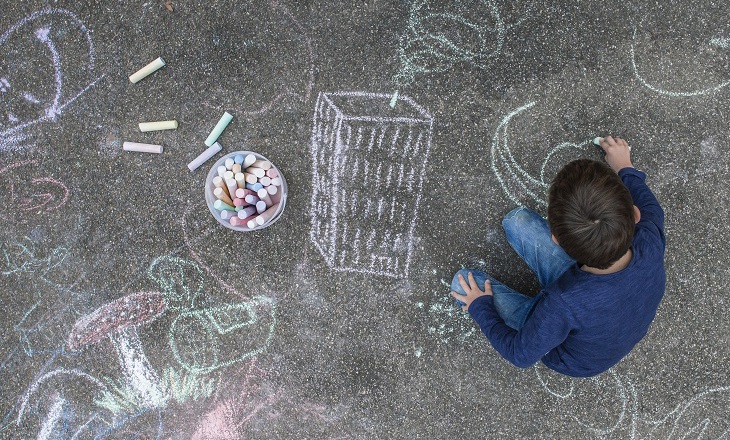Case Study: Ōtautahi Play Streets project
Case Study: Ōtautahi Play Streets project

With increasing amounts of traffic and vehicles, it felt like the days of playing basketball on the corner, or riding trolleys down the street were long gone in the neighbourhoods of Ōtautahi.
Then entered the Ōtautahi Play Streets project.
This initiative, funded through the Waka Kotahi Innovating Streets for People, was run by Sport Canterbury with support from Christchurch City Council and Sport NZ. It was created to bring tamariki and their whānau together, strengthen neighbourhood connections and encourage ‘kids to be kids’ – playing and enjoying the outdoors.
Since 2021, four streets have been turned into Play Streets, which involves temporarily closing the streets to traffic and allowing neighbourhoods to ride bikes, play games such as tug-of-war and Connect Four, and socialise beyond their front door.
The pathway to play
Making Play Streets a reality simply took a bit of collaboration between Sport Canterbury, Christchurch City Council, and a few key organisations, as well as consultation with residents to organise some temporary street or road closures.
“The collaborative approach, which included Christchurch City Council, Isaac Group (Ōtautahi Christchurch base), and a range of community and neighbourhood partners, has helped work through any barriers and challenges that presented themselves during the Ōtautahi Play Streets project. Christchurch City Council really understands our aspirations for scalability and sustainability of the Play Streets kaupapa in Ōtautahi Christchurch,” says Adam Gard’ner, Regional Play Systems Lead at Sport Canterbury.
Barrier to play
Emma Woods — who took part in the Master of Urban Renewal and Resilience programme and interned on the Ōtautahi Play Streets project — wrote her dissertation on Play Streets. She says Play Streets are a simple and effective concept that address some of the key concerns that parents often have when it comes to allowing their kids to play beyond their front yard.
“Fear, specifically fear of traffic, but also fear of strangers, is the main deterrent for parents giving their children autonomy or freedom to move and play independently in their neighbourhoods. These fears are connected — without regular opportunities for connection to others in the neighbourhood, everyone is a stranger,” Emma says.
She observed the process of creating two Play Streets in the Ōtautahi Play Streets project, and carried out surveys with those who were impacted to inform her dissertation. Emma discovered that Play Streets were successful and enjoyable, they fostered new and existing connections, and helped to identify enablers and barriers for children playing or moving independently in their neighbourhoods.
“The top things people liked about the events were 'seeing children playing', 'children had the opportunity to play with children they do not usually play with', and 'the street felt friendlier',” says Emma.
The barriers that stopped people in the community from getting outdoors and connecting included underutilised or unsafe parks, traffic and road works, and anti-social activities, like drug use and high crime rates. Creating the Play Street gave people who had previously been hesitant to engage with their community an opportunity to connect in a safe environment.
“Play Streets support the important message that streets [aren’t] just for machines (vehicles) but for all users.”
Community building, one street at a time
For more than 10 years, Emma has been designing and creating nature-based play spaces for children. A webinar she attended about Play Streets struck a chord with her and she wanted to explore the links between Play Streets enhancing social connections, advocating for children's spatial justice, and their use in fostering connected and resilient communities.
“I had increasingly been interested in how children play in spaces outside of schools, playgrounds and parks — how the societal norms of children playing out on the street or accessing 'wasteland' sites for play and exploration has changed so much over the past few decades and what that means not only for children's wellbeing but also for community's wellbeing,” Emma says.
She discovered through the survey that all participants who had lived on their street for less than one year, more than ten years, or who didn't have children selected 'meeting new neighbours' as something they enjoyed about the event indicating Play Streets do have the ability to create new connections within a community. Others commented that they enjoyed seeing how play occurred naturally between neighbourhood kids, and sharing equipment brought from each other’s houses occurred freely.
Adam says, “Play Streets are an acknowledgement to challenge how streets and roads could be used in the future, to support safe, connected neighbourhoods and communities.
“Play Streets support the important message that streets [aren’t] just for machines (vehicles) but for all users. They are an innovative method of encouraging social cohesion and play among residents on a street and nearby streets. They are an acknowledgement to the past, to quieter streets.
The overwhelming positivity generated by the Ōtautahi Play Streets project was felt right through the process by residents — from proposal to activation.
Louise Van Tongeren, Christchurch City Council Play Advocate says the council sees Play Streets as an integral part of its commitment to community wellbeing, safer streets, and more playful neighbourhoods.
“As a council, we are committed to making [Play Streets] more accessible for communities and to [working] closely with Sport Canterbury and other organisations and individuals to bring play streets into neighbourhoods,” Louise says.
“We really value the learning from the past play streets and see them as an integral part of our commitment to community wellbeing, safer streets, and more playful neighbourhoods.”
Find out more
You can find out more about Play Streets and how your neighbourhood can get involved on our website.
